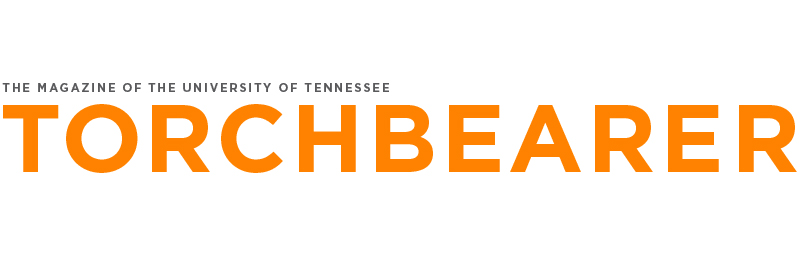In a small office on the third floor of the Art and Architecture Building, an interdisciplinary group of undergraduate students has been working to change French education at UT, one block of code at a time.
The new app Bonne Chance, which means “good luck” in French, began in 2015 as a collaboration between Cary Staples, Professor of design in the School of Art, an OIT Faculty Fellow, and an Experiential Learning Fellow, and Sébastien Dubreil, who was then an associate professor in French and director of the French Language Program. The primary objectives were to improve French instruction at UT and create new learning environments. By providing a companion app to the elementary French courses that incorporates history, culture, and art, the team hopes to replace clunky and outdated technology with a fresher, more fun approach students can carry with them.
“The initial concept was to create an alternative to the language lab,” says Staples. “We wanted to create an environment where students could interact with language in context. The problem with that is you can’t see who’s speaking, and a lot of the time it’s just random phrases and you have to figure out what they mean.”
In a fashion reminiscent of the Carmen Sandiego TV show of the 1990s, players track down a time-traveling art thief by solving language puzzles and having conversations with historic French personalities. As they travel throughout French history, the artistic and musical styles of the game change to reflect the time period.
“I came in kind of building from the ground up,” said Alex Gray, current sound designer for the project who is a senior double majoring in composition and music and culture. He put in background ambient music during dialogue and worked to create themes throughout the game.
“For instance, our main character’s name is Élodie Clair, so we thought it’d be cute to make her theme song ‘Clair de Lune’ by Debussy,” Gray said. “But because she’s from the future, we decided to make it more futuristic with soft synths and pads in the background.”
Each section of the game focuses on a different aspect of French language, broken down and ordered as they would be taught in French 111 and 112. Each section has its own conversations, characters, and minigames, all connected by an overarching story that takes players from Notre Dame to the Eiffel Tower.
App team members come from fields as varied as graphic design, music, fine art, linguistics and French. Although students in computer science have expressed interest in the project, and at times participated in its development, the incentives offered—primarily foreign language credits—are not required by their program. However, that gap may soon be bridged with the potential introduction of a game design minor.
Skillful planning and an environment of continual mentorship have helped circumvent the team’s shortage of technical expertise. Choosing to work in Unreal Engine—a software framework used to build video games—has been particularly advantageous.
“We decided to use Unreal Engine because of its ability to do these coding modules,” said Kiernan Bensey, a graphic design major who worked on the project for two years. “You can connect them visually, and it’s not so much typing code, which was good, because most of us were primarily graphic design students.”
Above all, the team wants Bonne Chance to be a compelling product. Students come to the lab every day as early as 8 a.m., have weekly team meetings with outside professionals, and continually think of ways to improve their game. And this ambition is evident in the project’s history, with the decision made relatively early in development to shift from releasing a set of small educational minigames to a fully voiced time-traveling game with play lasting more than two hours.
“We decided early on we didn’t want to just do the French thing—we didn’t want to just teach French, that wasn’t the only goal. It was also to create a story,” said Bensey.
More broadly, the development of Bonne Chance is significant for undergraduate research at the university, as it is the first interdisciplinary project sponsored in part by the Office of Undergraduate Research. Marisa Moazen, director of undergraduate research, sees potential for interdisciplinary programs like Bonne Chance in the future.
“It was a pilot program for us to see if there was interest in interdisciplinary research at the undergraduate level and to see what the possibilities were,” said Moazen. “Having a project that gives the ability for students in music and French and graphic design to work together, to see what each discipline brings to the project and how that all fits in, is something that’s important to us.
“We’re excited for where the project is going. We’re excited for the students who’ve had a chance to work on it and to see the results they’re having.”
For the team behind Bonne Chance, there is certainly reason to be excited. The project is nearing completion and is expected to be available on both the iOS and Android app stores soon.
There is still work to be done, but the team is confident they can deliver a quality product after more than two years of development. And, if they’re right, they might even start a revolution.


2 comments
Us Alumni want to refresh our French 101 and 102. Can this become available via the internet sometime in the future? Oui, oui I want to learn French again.
The app should be available in iOS and Android app stores soon!
Comments are closed.